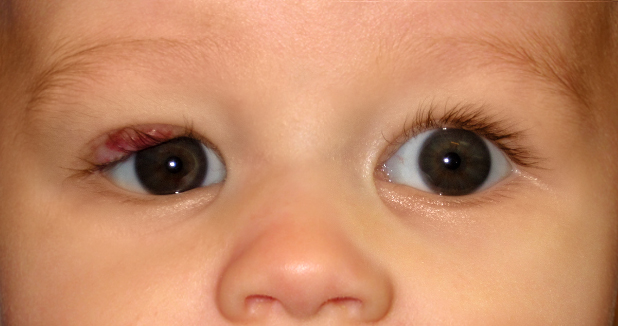Hemangiomas are benign vascular growths that typically appear in infancy and may require treatment depending on their size, location, or potential complications. With various treatment methods available, understanding how these options compare in terms of effectiveness, invasiveness, recovery, and outcomes is essential for making informed decisions.
Patients exploring Hemangiomas Treatment in Dubai benefit from access to a range of cutting-edge techniques tailored to individual needs. This guide compares the most common hemangiomas treatment options, highlighting their advantages and considerations to help patients and caregivers choose the best approach.
Observation and Monitoring
When It’s Used
Observation is often the preferred approach for small, non-problematic hemangiomas that are not causing functional or cosmetic concerns. Many infantile hemangiomas naturally resolve over time without intervention.
Benefits
- Non-invasive: No medical procedures or treatments are involved.
- No Side Effects: Avoids risks associated with medications or surgery.
- Cost-Effective: Requires only periodic check-ups with a specialist.
Limitations
- May not be suitable for rapidly growing or problematic hemangiomas.
- Prolonged waiting may cause anxiety in caregivers concerned about appearance or complications.
Medications
Oral Beta-Blockers
Medications like propranolol are a widely used and effective treatment for hemangiomas, particularly those that are rapidly growing or causing functional issues.
Benefits
- Highly Effective: Shrinks hemangiomas quickly, often within weeks.
- Non-Invasive: Taken orally, making it suitable for infants and young children.
- Targets Deeper Lesions: Effective for both superficial and internal hemangiomas.
Limitations
- Requires long-term use, often for several months.
- Possible side effects, including low blood pressure, fatigue, and gastrointestinal issues.
Topical Beta-Blockers
For small or superficial hemangiomas, topical timolol offers a targeted alternative to oral medications.
Benefits
- Minimal systemic side effects compared to oral treatments.
- Easy to apply and well-tolerated by most patients.
Limitations
- Less effective for larger or deeper hemangiomas.
- Requires consistent application over time to achieve results.
Laser Therapy
Laser treatments, particularly pulsed dye lasers (PDL), are commonly used for flat or superficial hemangiomas.
Benefits
- Precision: Targets blood vessels within the hemangioma without damaging surrounding skin.
- Quick Sessions: Treatment sessions are relatively short.
- Minimal Downtime: Patients can typically resume normal activities immediately.
Limitations
- May require multiple sessions for optimal results.
- Can cause temporary redness or sensitivity in treated areas.
- Less effective for deep or internal hemangiomas.
Surgical Removal
Surgery is generally reserved for hemangiomas that are resistant to other treatments or causing severe complications, such as obstructing vision or airways.
Benefits
- Definitive Solution: Removes the hemangioma entirely, addressing both functional and cosmetic concerns.
- Immediate Results: Eliminates the lesion in one procedure.
Limitations
- Invasive: Requires anesthesia and carries surgical risks, such as infection or scarring.
- Recovery Time: Patients may need several weeks to fully recover.
- Not Always Necessary: Reserved for severe cases where other treatments are inadequate.
Cryotherapy
Cryotherapy, or freezing therapy, is an alternative method for small, superficial hemangiomas.
Benefits
- Minimally Invasive: A non-surgical option for minor lesions.
- Quick Procedure: Typically performed in an outpatient setting.
Limitations
- May not be effective for larger or deeper hemangiomas.
- Can cause temporary blistering or discoloration.
Photodynamic Therapy (PDT)
PDT is an emerging treatment that combines a photosensitizing agent with light exposure to target hemangiomas.
Benefits
- Non-Invasive: No surgical incisions required.
- Selective Targeting: Minimizes damage to surrounding tissues.
- Suitable for Sensitive Areas: Effective for hemangiomas in delicate locations, such as the face.
Limitations
- Still relatively new, with limited long-term data available.
- Requires multiple sessions for optimal results.
Comparison of Treatment Outcomes
Effectiveness
- Most Effective for Rapid Growth: Oral beta-blockers, especially propranolol, are highly effective for large or deep hemangiomas.
- Best for Cosmetic Improvement: Laser therapy is ideal for reducing redness and improving the appearance of superficial hemangiomas.
- Definitive Results: Surgical removal offers immediate resolution but is typically a last resort.
Invasiveness
- Least Invasive: Observation and topical treatments.
- Moderately Invasive: Laser therapy and cryotherapy.
- Most Invasive: Surgery, with potential risks and recovery time.
Suitability for Different Cases
- Superficial Hemangiomas: Laser therapy, topical beta-blockers, or observation.
- Deep or Internal Hemangiomas: Oral beta-blockers or surgery for severe cases.
- Sensitive Areas: Photodynamic therapy or precise laser treatments.
Factors to Consider
Age of the Patient
- Infants: Oral or topical beta-blockers are commonly used due to their effectiveness and safety profile.
- Older Children and Adults: Laser therapy or surgery may be considered for persistent or problematic lesions.
Location and Size
- Small, Superficial Lesions: Topical treatments or laser therapy are often sufficient.
- Large, Deep Lesions: Medications or surgery may be required.
Patient Preferences
- Minimally Invasive Options: Patients or caregivers who prioritize non-invasive methods may prefer laser therapy or observation.
- Quick Resolution: Surgery may be appealing for those seeking immediate results, despite the invasiveness.
Conclusion
Comparing hemangiomas treatment options reveals a wide range of effective approaches tailored to the individual’s age, condition, and preferences. From minimally invasive observation and laser therapy to definitive surgical removal, each method offers unique advantages and considerations.
In Dubai, patients benefit from advanced medical technologies and expert care, ensuring that the chosen treatment aligns with their specific needs and goals. Consulting with a specialist ensures that the most suitable option is selected, providing the best possible outcomes for both functional and cosmetic concerns.






Comments